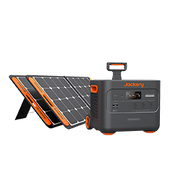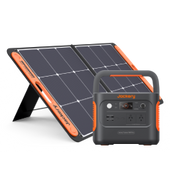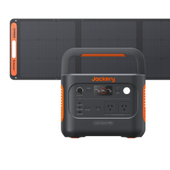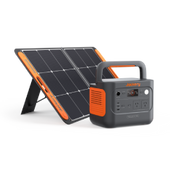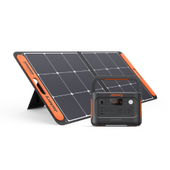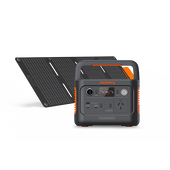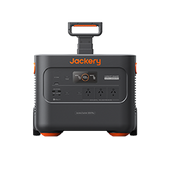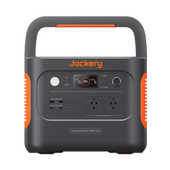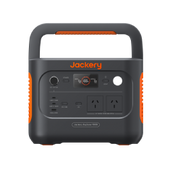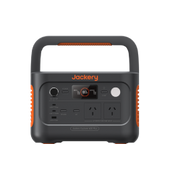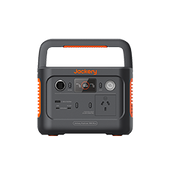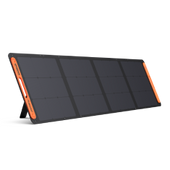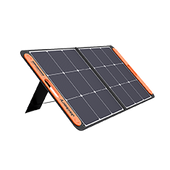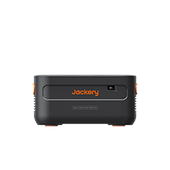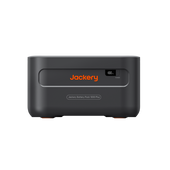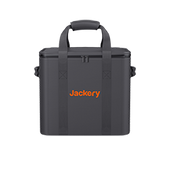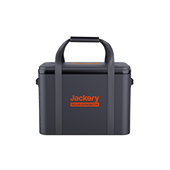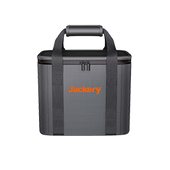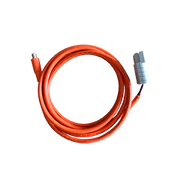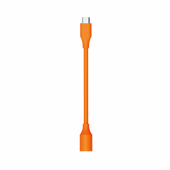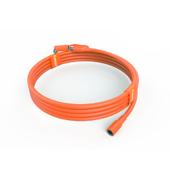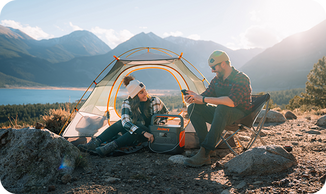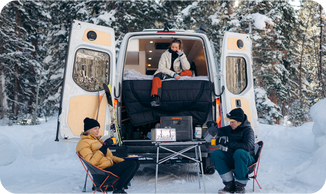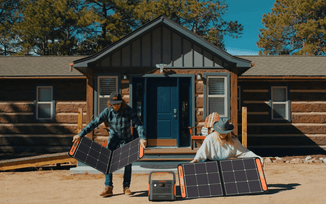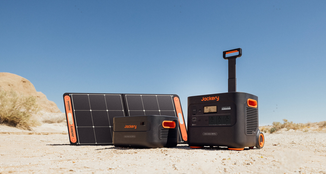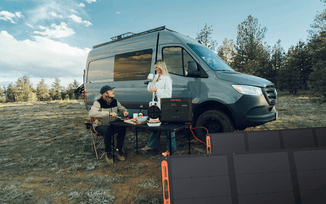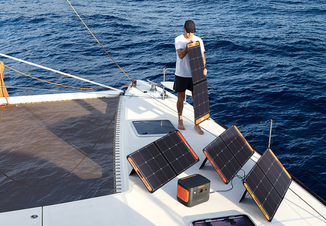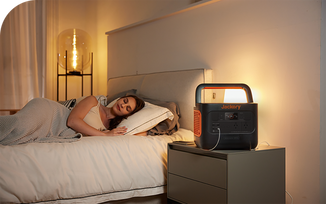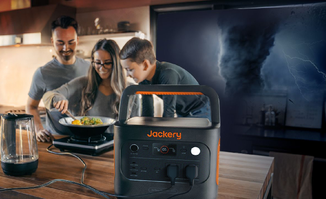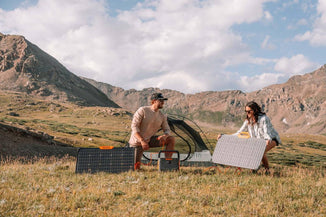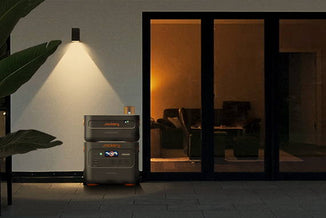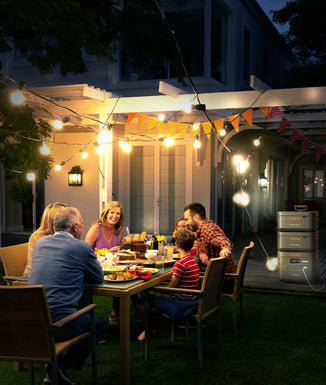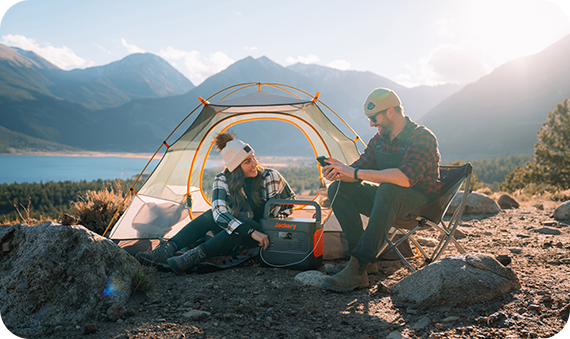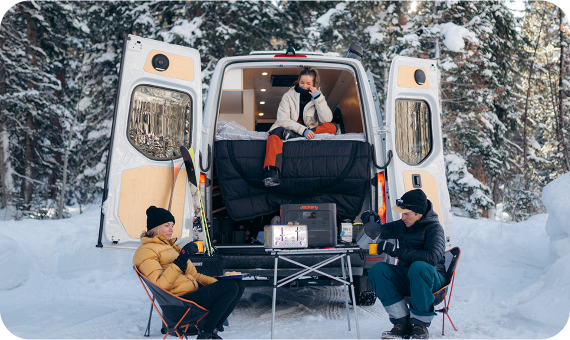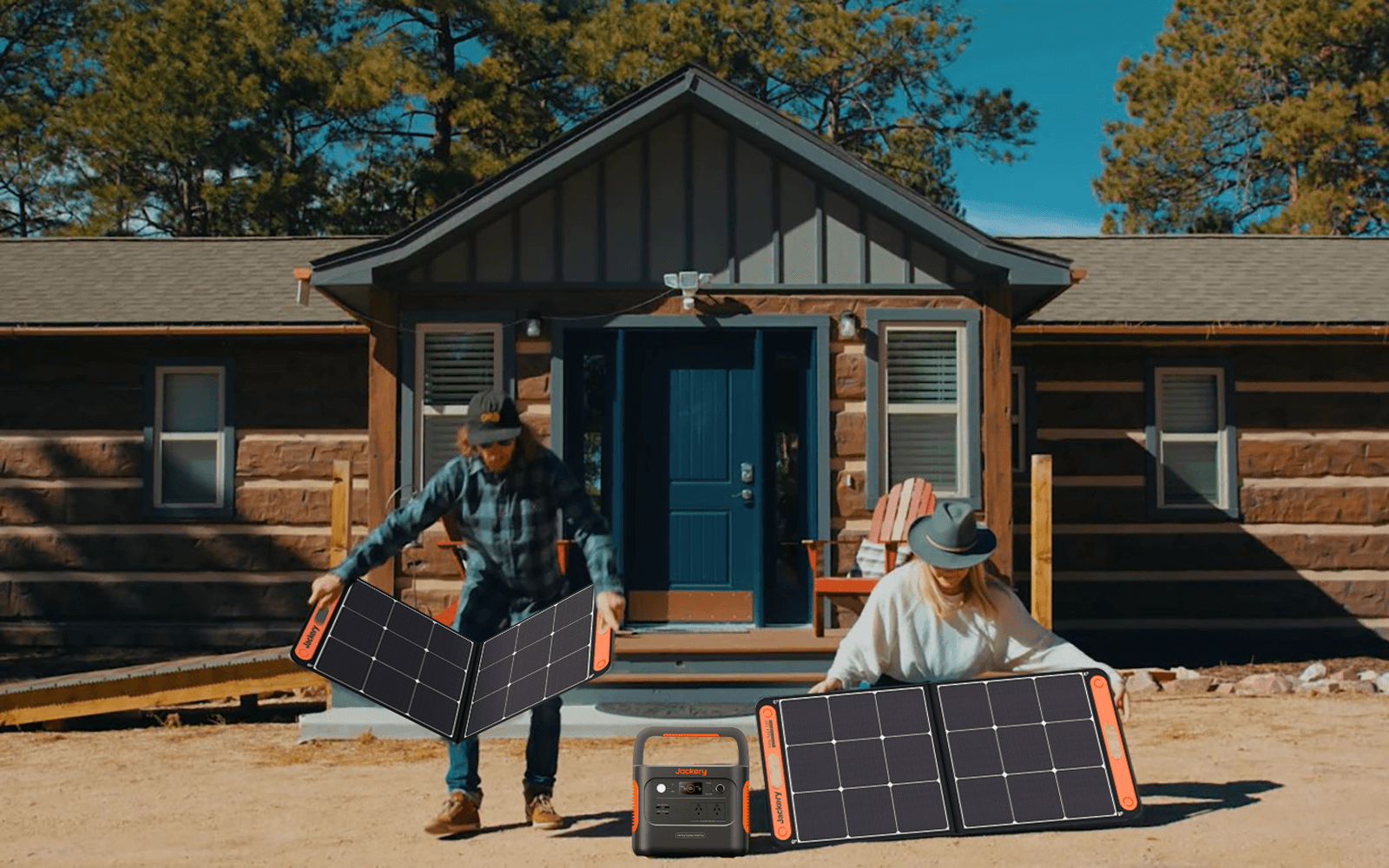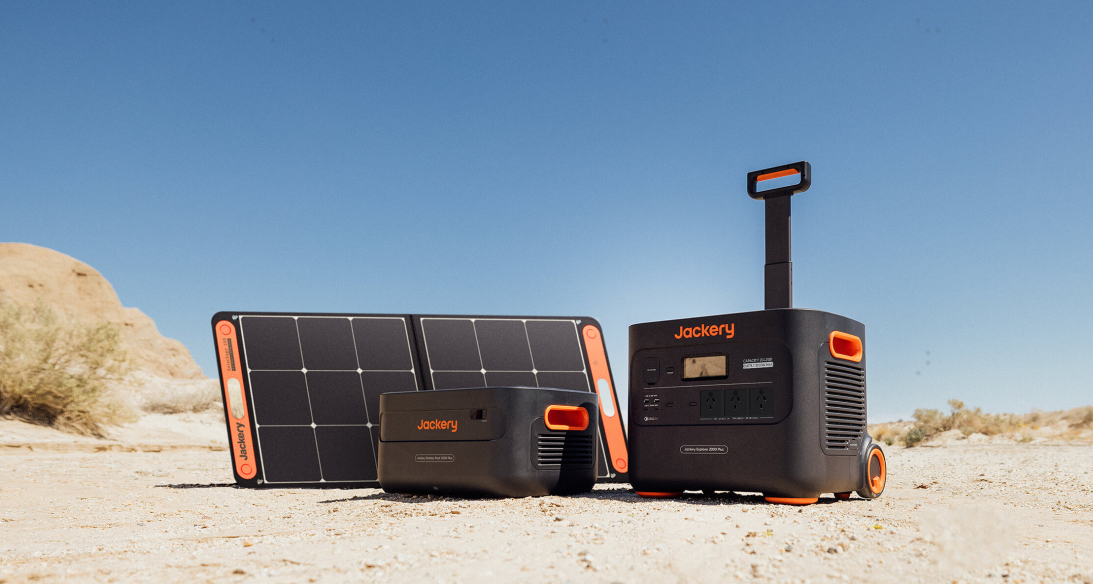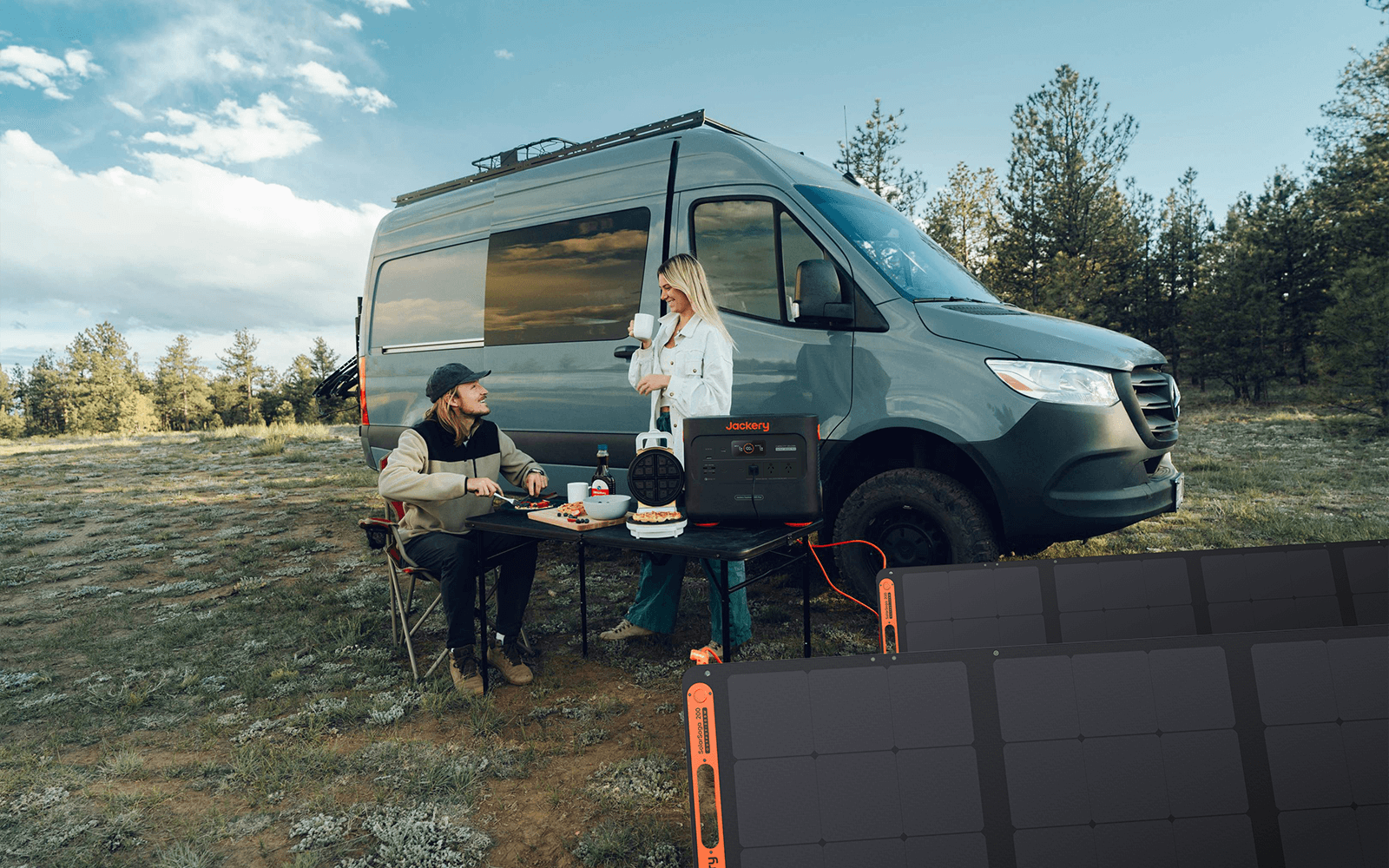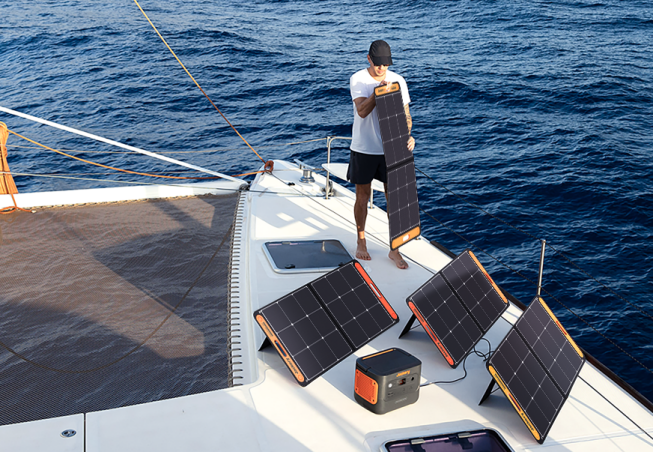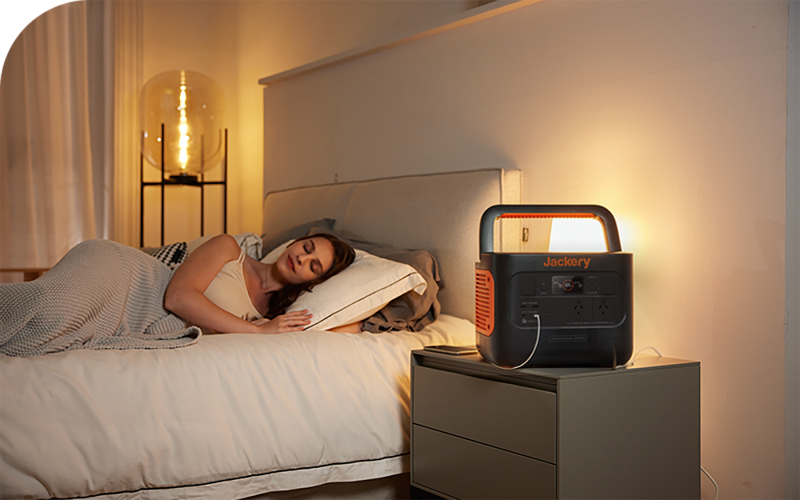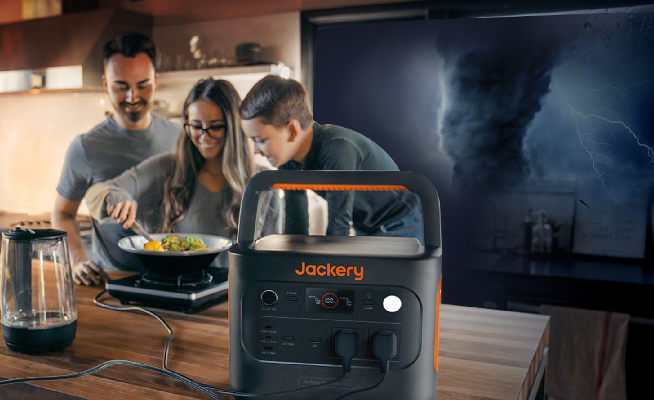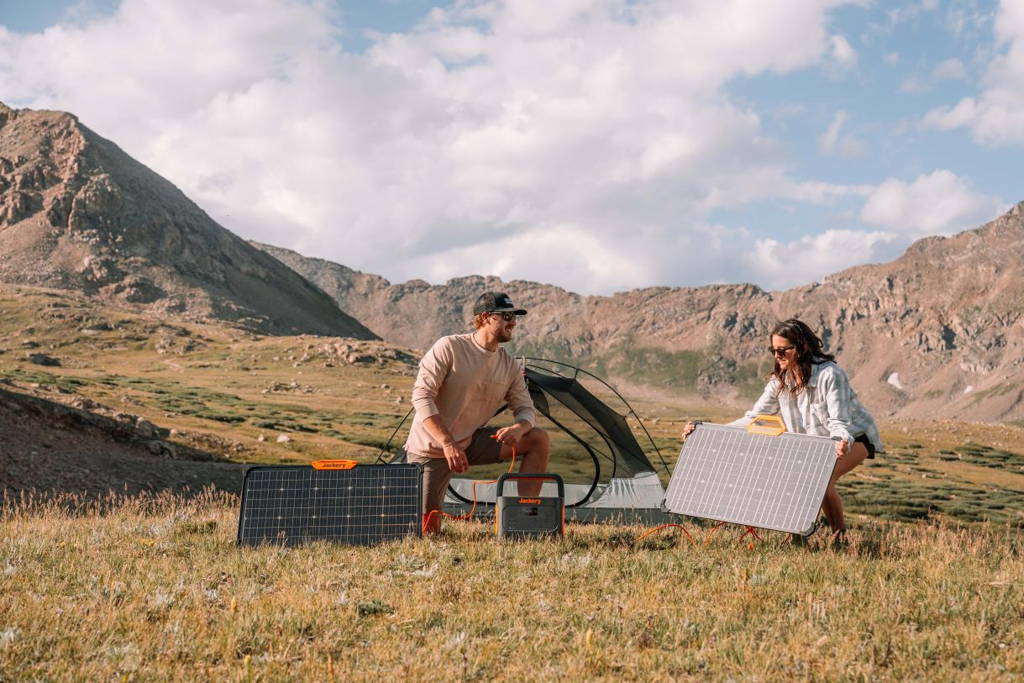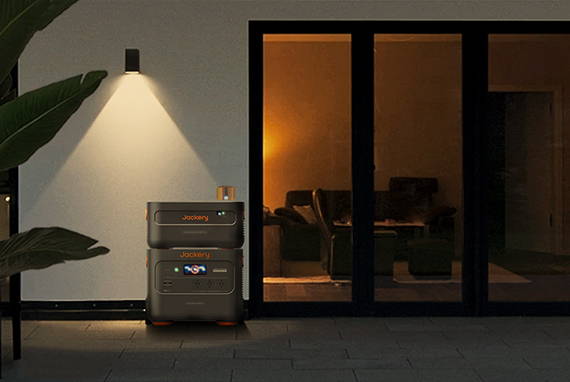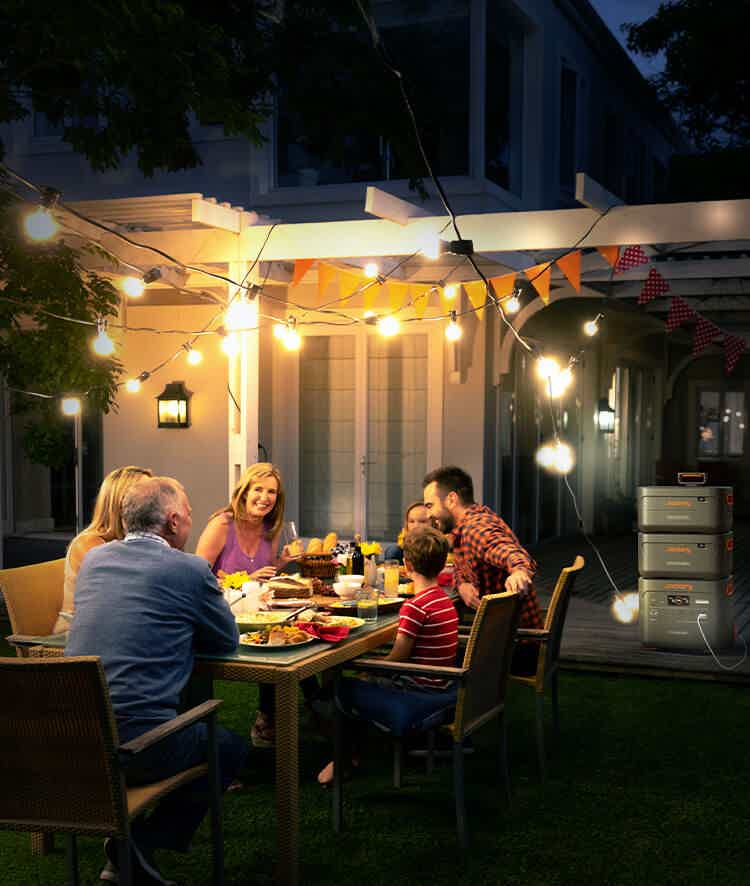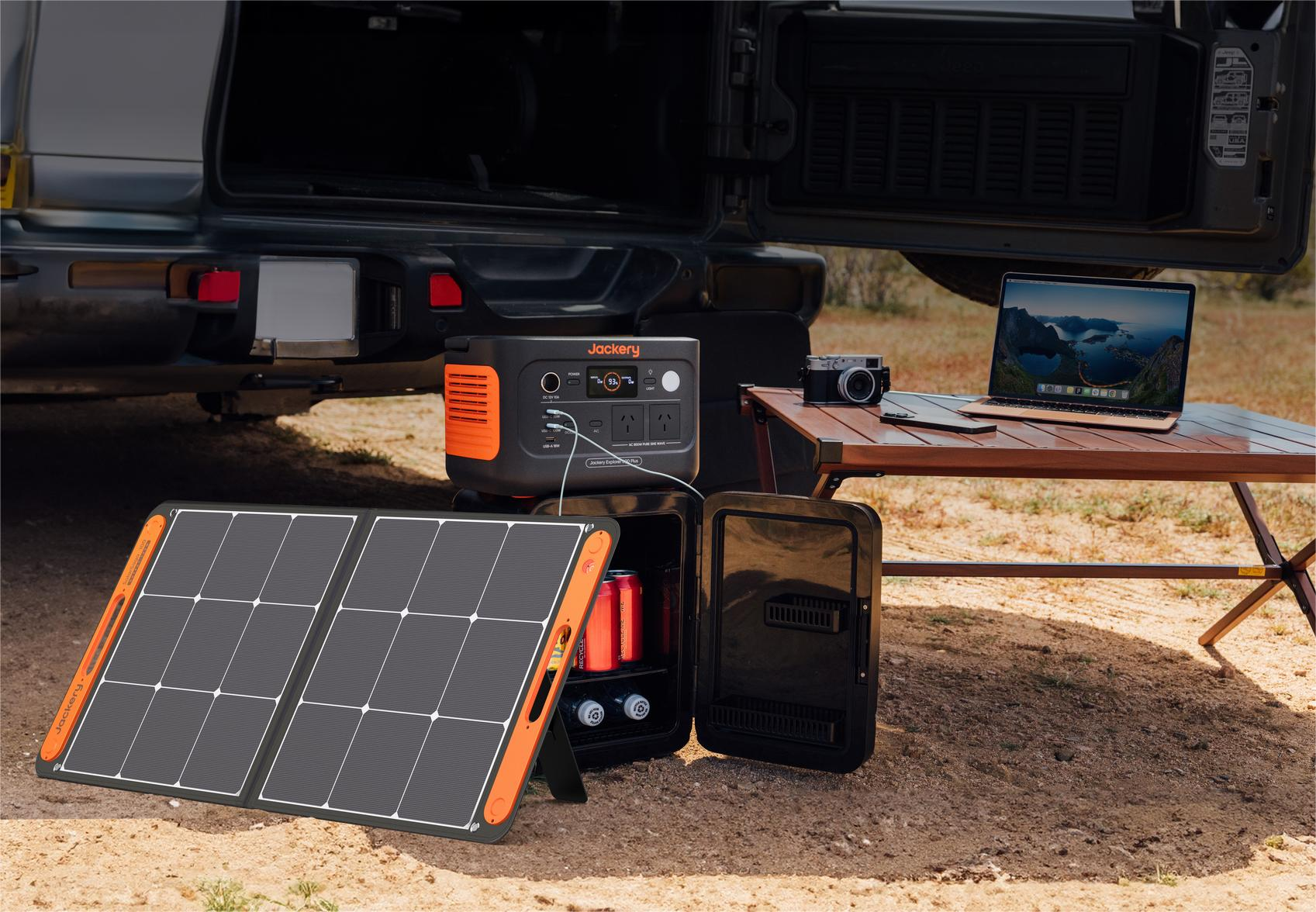|
Key Takeaways: |
|
• Starting with the concept of portable camping refrigerators, two different types of portable refrigerators are introduced. • Regarding the size of portable camping refrigerators, we also took the opportunity to explain some concepts related to power units to help you understand so that you can buy a more suitable fridge. • Finally, the article introduces four ways to charge a portable camping refrigerator and tips on reducing its power consumption. • We recommend Jackery Solar Generator 2000 Plus and 1000 Plus to charge different sizes of camping fridges. |
What Is a Camping Fridge?
You've probably heard of the classic camping coolers, the plastic chests that keep their contents cold using ice or freezer packs and insulation. In addition to keeping their contents cold, portable refrigerators offer many benefits over conventional coolers. The most dependable and sturdy portable refrigerators use a power source, a compressor, and other parts to maintain a constant interior temperature that is safe for food.
A camping fridge is a fridge that can be taken with you anywhere. It is designed to operate on meagre power, generally using your car's 12V battery. Portable fridges were intended as an open chest with a lid on the top, a bit like a refrigerated ski. Today, portable fridges come in many shapes, sizes, and variations.
They are trendy in Australia for camping, caravans, trucks, utes, cars, and 4WDs in remote and off-grid locations. They are perfect for keeping drinks cold and food fresh, no matter where you travel.
Different Types Of Camping Fridges
While some machines are marketed as "portable camping fridges," many are just coolers with fancy names.
Compressor-based and thermoelectric refrigeration are the two main types of actual portable refrigerators. A third, less popular kind of refrigerator is an absorption refrigerator, which is usually less portable.
Compressor-Based Camping Fridge: Standard compressor refrigerators, such as those in most homes, employ refrigerants, which absorb heat and lower the refrigerator's internal temperature when they change from a liquid to a gas. The most significant advantage of compressor car fridges is that they are extremely power efficient. These fridges will run off 12v or 240v and, in most cases, draw only 1-2amps per hour. To put that into perspective, your typical car interior light will draw 1amp per hour.
Compressor fridges are ideally suited to car travel and operate happily on 12v. Depending on the size of the car's battery, it can run for many hours with the car turned off without any real risk of the battery being completely drained.
Compressor fridges are ideally suited to creating a solar power solution when you stay in one place longer. They are the best for touring, solar, or generator camping and will fit most campers. The compressor releases the heat by applying pressure to the gas and transforms it into a liquid. A thermostat turns the compressor in the refrigerator on and off to maintain the cooling process.
Thermoelectric Camping Fridge: The way thermoelectric coolers and refrigerators operate is different. They generate a thermoelectric field between two ceramic plates using electricity. Instead of refrigerants, they generate cold air using solid-state cooling. Due to their nature, these fridges draw a lot of power.
They are also relatively inefficient and can only cool to a certain amount below the ambient outside temperature, which depends on the thermoelectric plate size. Thermoelectric fridges are best for transporting food between destinations with 240v mains power available, such as campgrounds and hotels.
What Size Camping Fridge Do I Need?
The number of people you need to store food and beverages for, how many days or weeks' worth of meals it must hold, and whether it will fit in a large 4WD vehicle or a smaller car all affect how big your portable refrigerator needs to be. The number of litres and cans that a camping refrigerator can accommodate determines its size:
|
Litres |
Cans |
|
25L |
27 |
|
35L |
47 |
|
40L |
60 |
|
50L |
72 |
|
65L |
106 |
|
80L |
120 |
To determine the size of the refrigerator, you'll need for camping, measure the size of your car's boot or the tray on the back of your truck (you'll also need a 12V outlet in your ute tray or boot) and list everything that must fit, like food, beverages, fishing gear, and catches.
Additionally, remember that a larger camping fridge will require more space in your van (leaving less room for everything else), be heavier to move around (especially when it's full of food and drinks), and extend the amount of time you can go between shopping for new supplies.
A portable refrigerator typically requires 200 to 400 beginning watts and utilises 50W to 100W power. However, this can change depending on the appliance's size, brand, and efficiency.
The Electricity Consumption of Mini Camping Fridges in kWh
|
|
Estimated kWh Used Per Day |
Estimated kWh Used Per Month |
Estimated kWh Used Per Year |
|
50-Watt Fridge |
0.4 kWh/day |
12 kWh/month |
146 kWh/year |
|
60-Watt Fridge |
0.48 kWh/day |
14.4 kWh/month |
175.2 kWh/year |
|
70-Watt Fridge |
0.56 kWh/day |
16.8 kWh/month |
204.4 kWh/year |
|
80-Watt Fridge |
0.64 kWh/day |
19.2 kWh/month |
233.6 kWh/year |
|
90-Watt Fridge |
0.72 kWh/day |
21.6 kWh/month |
262.8 kWh/year |
|
100-Watt Fridge |
0.8 kWh/day |
24 kWh/month |
292 kWh/year |
*Assume the mini fridge runs 8 hours a day.
When delving into the specifics of electricity, it's essential to master basic electronic concepts like amps, watts, voltage, and ohms. Determining the power station's watt, ampere, voltage, and ohms is essential to ensure compatibility with your house or outdoor appliances.
Conversely, the leading cause of appliance malfunctions is powering devices with batteries of the incorrect voltage. The best thing about these fundamental electrical terms is that they are related and can be computed using a straightforward formula.
In Australia, the unit of measurement for the number of electrons passing through a spot in a second is amperes or amps. Stated differently, this explains how current moves across an electrical circuit. Mathematically, amps are the product of an appliance's watts and volts.
The formula Watts / Volts = Amps
If you know an appliance's watts and volts, you can quickly determine its amps. For instance, the amps value of an electric device with watts and volts of 3600W and 240V, respectively, is
Amps = 3600W / 240V = 15A.
Amperage, measured in amperes, is the strength of the electric current. When the amperage is higher, more electricity can move across the circuit.
How To Power A Camping Fridge?
Generally, the main ways to power a camping fridge include:

Generator Power
Battery Power
Solar Energy
Powered Campsite
Below, we go over the power options and the benefits of each:
1. Power from a Generator
A portable generator is typically the first thing that springs to mind when considering ways to power a camp fridge, particularly if you need more than one. However, portable generators have drawbacks, including the fact that they often need their fuel supply, they can be noisy, and using them is strictly prohibited in many locations, including national parks.
If you're a weekend or short-term camper and decide a generator is the way to go, ensure the unit you choose can supply enough energy for your campsite's needs. You should also consider its size, fuel requirements and decibel readings (the quieter, the better, so you won't upset your fellow campers and disturb the serenity).
For quiet generators, we think Jackery Solar Generators are best for charging camping fridges with lower noise (human-whisper) and pollutants, which is optimal for camping sites.
2. Battery Power
While many portable camping fridges and freezers come with AC/DC power connections, they also have 12-volt power adapters (12v), which make it easy to power your fridge via your car or 4WD battery. Today, most vehicles—especially 4WDs—have several 12v power sockets. For older cars, the cigarette lighter socket will be just as sufficient.
When you connect via a 12v cigarette lighter socket, the car's battery will keep the fridge chilled while driving. But here's the rub: Once the engine is switched off, it will keep drawing power from the vehicle, meaning you could inadvertently end up with a flat battery. A battery isolator switch is an excellent tool for avoiding this situation.
Many campers refuse to leave home without packing an auxiliary or deep cycle battery in their vehicle. These batteries are dedicated solely to providing 12v energy when camping, so you don't risk draining your car or boat's battery and being stranded when heading home. You must ensure the battery is charged to capacity before leaving home and regularly check and clean it when unused.
You can also choose a portable power station, such as Jackery Portable Power Stations, ranging from 300Wh to 12 kWh, to quickly charge your camping fridge. The lithium-ion and LiFePO4 batteries inside ensure a consistent and stable power supply.
3. Solar Energy
Many people consider solar energy the best way to power a camping fridge. While this might seem extravagant, affordable solar panels and blankets can power many appliances beyond your camping fridge.
Many solar panel kits are stored flat when unused, so you don't have to compromise on your room in your car, caravan, or 4WD. For many campers, solar makes a great complementary energy source to mains and battery power for that extra peace of mind. Keep your battery topped up when your car is not running with a solar power source, which is also great for longer camping trips.
If installing a solar panel system on your camper van or caravan's rooftop is costly, you may consider investing in a portable solar generator, like Jackery Solar Generator. It has the same working principle.
4. Powered Campsite
For optimal convenience, choose a powered campsite suitable for the whole family to stay happy and healthy. These days, powered campsites are standard and can elevate your camping so you can enjoy the convenience and cold drinks at the end of a long day.
However, your campsite options will be restricted, so ensure you book early, as you may find few options in remote locations. Pop a few ice packs into your fridge before you embark, and your food and drinks should remain cool until you reach your powered campsite.
Jackery Solar Generators for Camping Fridges
A solar generator is essential for charging a camping fridge because it offers a steady, renewable, and eco-friendly power source.

A solar generator can maintain the operation of your refrigerator during power interruptions or when you are off the grid. It emits no pollutants or greenhouse gases. Solar generators are lightweight and suitable for many indoor and outdoor appliances. A solar generator can perpetually supply energy to a refrigerator, providing adequate sunlight.
Enhance your outdoor cooking space with Jackery Solar Generator 2000 Plus or 1000 Pro. These solar-compatible power stations can power mini refrigerators, lighting, and portable ovens, making your outdoor kitchen as functional as your interior while remaining environmentally responsible.
Jackery Solar Generator 2000 Plus
The Jackery Solar Generator 2000 Plus sets a new benchmark in portable power solutions, offering unparalleled performance, safety, and durability. With a 2 to 12 kWh expandable capacity, it can quickly charge mini to large camping fridges. This solar generator is designed for longevity and reliability and is built with a LiFePO4 battery that boasts a 10-year lifespan and 4,000 charging cycles. Why this generator is suitable for charging fridge:

Expandable Power for Fridge: The Jackery Solar Generator 2000 Plus accommodates additional battery packs, enhancing its capacity from 2 kWh to an impressive 12 kWh, making it ideal for road trips, outdoor camping, and heavy-duty use.
Ultra-Long Standby: The 2000 Plus features an extended standby mode that maintains a 50% charge for up to 2 years. Feel assured that your appliances are connected to our 2000 Plus! With a 20ms EPS, essential devices such as your refrigerator and CPAP remain operational instantaneously during camping.
Never Worry about Losing Power: The Solar Generator 2000 Plus requires only 2.5 hours for a complete sun charge when utilising six SolarSaga 200W solar panels. The power source achieves complete autonomy by using solar energy for charging, eliminating reliance on the power grid.
|
Jackery Solar Generator 2000 Plus Working Hours |
|
|
Refrigerator (500W) |
3.3-20.4H |
|
Mini-fridge (65W) |
25.1-157H |
|
Freezer (100W) |
16.3-102H |
|
Portable Cooler (150W) |
10.9-68H |
|
Large Fridge (700-800W) |
2-14.6H |
Jackery Solar Generator 1000 Plus
The Jackery Solar Generator 1000 Plus is designed sustainably, offering whisper-quiet operation and zero emissions. Its advanced IBC solar technology ensures a quick and efficient recharge in 4.5 hours with four SolarSaga 100W panels, even in low-light conditions.

Beyond its environmental benefits, the 2000W output and expandable capacity provide versatility for powering appliances and devices. Whether you're on a family road trip or a solo extended caravan trip, the Solar Generator 1000 Plus provides sustainable, reliable energy.
Perfect for environmentally conscious users, the Solar Generator 1000 Plus introduces 100% eco-friendly packaging, reflecting Jackery's commitment to reducing waste. This generator is ideal for outdoor enthusiasts, homeowners, and anyone seeking a clean energy solution.
The Jackery Explorer 1000 Plus's lithium iron phosphate (LiFePO4) battery lasts for 10 years and produces a constant voltage and pure sine wave that keeps all of your electrical products safe. The new ChargeShield technology and steady power output also prevent devices from getting damaged.
|
Jackery Solar Generator 1000 Plus Working Hours |
|
|
Refrigerator (500W) |
1.6H |
|
Mini-fridge (65W) |
12.3H |
|
Freezer (100W) |
8H |
|
Portable Cooler (150W) |
5.3H |
|
Large Fridge (700-800W) |
1-1.1H |
How To Choose The Best Camping Fridge?
Now you know why a compressor-based camping fridge is the way to go. But it can seem overwhelming with so many camping fridge sizes, manufacturers, and models. To help overcome this, we recommend breaking your decision down into three parts:

STEP 1: Select the Camping Fridge Size/Capacity
First, narrow down your desired size and capacity. This may be enough space for a weekend of camping with your family, a short road trip and adventure, or—like us—you'll use your camping fridge on the road for weeks or months. Whatever your case may be, no one likes to run out of food earlier than expected.
Thankfully, most manufacturers offer options from smaller 45-liter models to 100+-liter models. For us, the sweet spot is around 60 litres—large enough to pack generously for a long weekend of family camping or strategically get by for five or so days on the road.
But consider your needs, vehicle space, and usage before selecting capacity—remember, you won't need room for ice!
STEP 2: Select a Camping Fridge Manufacturer
Once you've decided on the capacity you need in your camping fridge, it's time to narrow the scope by manufacturer. There are dozens out there, and new manufacturers are constantly entering the market. But we recommend sticking with manufacturers that have been in the camping fridge market long enough to develop a solid reputation for making durable, high-quality camping fridges.
Whether living it up at the local full-hookup campground or exploring the wilderness on old forest service roads (or no roads), you don't want something you'll be constantly concerned with breaking down - you can trust.
STEP 3: Select a Camping Fridge Model
Finally, you'll refine your choices to your favourite compressor-based model from each trusted manufacturer. This is where personal preferences and feature sets come more into play, but some criteria are pivotal to selecting the best camping fridge for your setup:
DC Power Consumption: No matter your usage scenario, the lower the power consumption, the better. A quality camping fridge will draw less than 1amp/hour at 12 volts DC power. Include built-in battery protection - so that you don't have to worry about the camping fridge leaving your vehicle with a dead battery.
Dimensions: Consider the external dimensions of each fridge and your available space if you'll be mounting your camping fridge on your vehicle's interior, as one model may prove to be a better fit over another.
Special Features: These are things like remote temperature monitoring, how the lid opens or if the lid is removable, whether it offers built-in battery protection, how weather resistant it is, etc. If it is a fridge or freezer (one setting) or a fridge and freezer (dual-zone temperature settings)
How to Save Camping Fridge Power Consumption?
Once you're off the grid, you're at the mercy of your batteries' capacity and the output of solar panels or a noisy, smelly generator, so it's essential to minimise your current draw as much as possible.
While you can still have a great time away without lights, music and the like, you'll have a bad time if you've run out of juice with a fridge full of perishable food. Here's how to help your camping fridge run more efficiently and keep the adventure rolling longer.
Pre-Chill Your Food: Making sure your food and drinks are cold before you put them in the fridge means it doesn't have to pull them down to cooled temperatures. Use your kitchen fridge to cool everything down before you pack for your trip, and grab cold beers from the bottle shop cool room when resupplying. You can also let those frozen steaks thaw out slowly in the fridge—they'll help keep everything else cool.
Use a Cover: An essential but sometimes optional accessory, a thermal cover provides additional insulation, improving energy efficiency. As a bonus, it protects your expensive fridge from bumps, scratches, and other damage.
Take It out of the Car: When parked, your vehicle's temperature can climb rapidly, which is bad news for your fridge, which has to work harder. If you're not going anywhere for a while, take your fridge out of the car. If that's not practical, try parking in the shade and leaving the windows cracked.
Put It in the Shade: Moving your fridge to a shaded area out of direct sunlight helps minimise the work it must do. This goes double for non-powered coolers, allowing your ice to last longer.
Turn It Off at Night: If you're camping in an area that gets cold at night, you can turn your fridge off overnight without affecting internal temperatures much. The high thermal mass from food, freezer bricks and frozen water bottles helps maintain stable temperatures.
Dial Back the Freezer Temperature: While we recommend keeping your home freezer at -18°C for the best balance between energy consumption and long-term food storage, you'll unlikely keep food frozen in a portable fridge for months. Setting the thermostat a little warmer can make a big difference in energy consumption and will still be safe for keeping food for your camping trip.
Camping Fridge FAQs
The following are the frequently asked questions about the camping fridge.
1. Do I need a cooler or a car fridge?
Freezers are independent or combination appliances that cool to 0°F (-18°C) or lower to freeze food, ice, and other items. Deep freezers are stand-alone appliances available in chest or upright formats. In contrast, refrigerator-freezer combinations come in various sizes and combine a large freezer with a refrigeration chamber.
2. What brand of portable fridge should I buy?
When it comes to portable fridges, like most products, you will get what you pay for. If you're after a reliable brand with an extended warranty, then you'll spend more upfront, but you can expect your fridge to perform better, last a lot longer and cost less over time.
Alternatively, plenty of cheaper brands and lower-quality fridges are available if you need something to get by for a year or so and you're not thinking about the long term. It is horses for courses.
3. How long does a portable fridge last?
A portable refrigerator can last around 20 years in most cases. However, this might vary depending on maintenance, durability, and manufacturer quality. With a good unit and proper care, your portable refrigerator should keep things cool for years!
Final Thoughts
A cooler, ice box, or camping fridge allows you to enjoy ice-cold drinks and your favourite dishes wherever you go. Whether camping, caravanning, boating, fishing, resting on the beach, having a picnic or party, or driving long distances, having your favourite refreshments constantly improves things. What kind of refrigerator should you buy? This guide will help you make a better choice.

